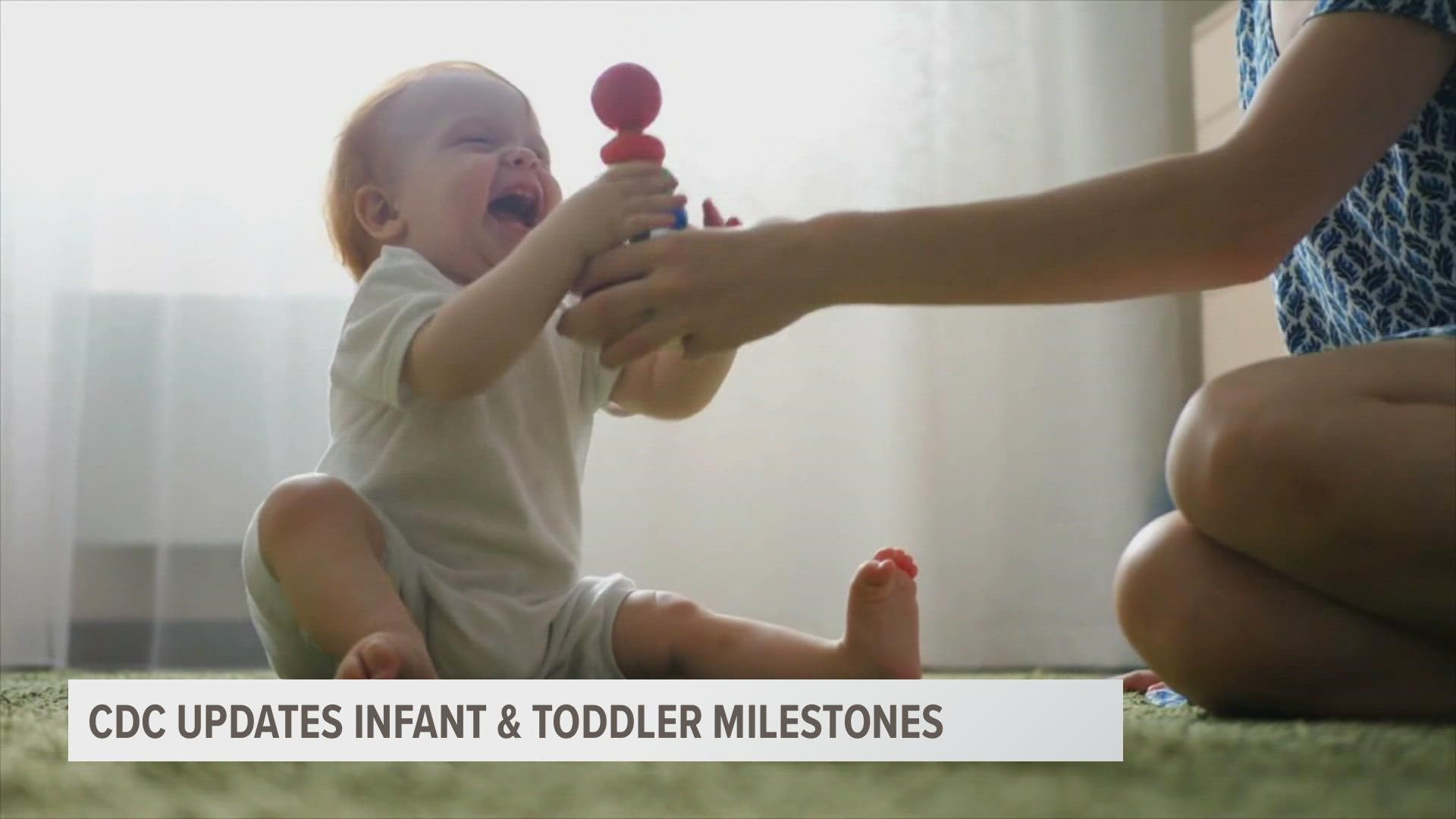GRAND RAPIDS, Mich. — For the first time since 2004, the CDC has updated its developmental milestones for infant and toddler development with the goal of earlier intervention for children who need help.
So how are these guidelines different and what are the major take-aways for parents?
This is the first major update to the Learn the Signs, Act Early campaign in nearly two decades.
"With the CDC, we usually think infection, but they are in the business of population health and success and wellness, and what better way than to support our children in their development," explained Helen DeVos Children’s Hospital pediatrician Dr. Kira Sieplinga.
The list is the yard stick parents and practitioners use to track development. So what are the major changes?
"They added in a point at 15 months, to help parents between the 12 month and 18 month visit who might be asking what's my child supposed to be doing? And then they added one at 30 months, so the same thing, offering guidance between the 2 and 3 year appointments. They simplified the checklists," said Dr. Sieplinga. "And the other thing I think is really helpful that they did, they changed the milestones just a little bit. Instead of 50% of children being able to meet a milestone, they raised it to 75%. I think it will provide reassurance for families and really identify children who are at risk."
This update better equips parents to evaluate development, it also provides resources to help them help their kids.
"It's so important that we identify concerns in development early and engage in appropriate services either in the home or outside the home. It also gives a lot of tools that you can use to enhance the skills that your child has in your own home and your own community. There are just some easy ways to engage all those different components of development," Dr. Sieplinga said.
And remember:
"These are not grades. It doesn’t tell how good your child is, you are not trying to have the best child on the block, you are just trying to have a healthy child who is developing on track," said Dr. Sieplinga. "Every child is going to develop at their own pace; we need to find the children who really do need a little extra help along the way."
Click here to access the complete Learn the Signs. Act Early. guidelines. If your child isn't making the age appropriate milestones, it's a good idea to mention it to your doctor.
►Make it easy to keep up to date with more stories like this. Download the 13 ON YOUR SIDE app now.
Have a news tip? Email news@13onyourside.com, visit our Facebook page or Twitter. Subscribe to our YouTube channel.

